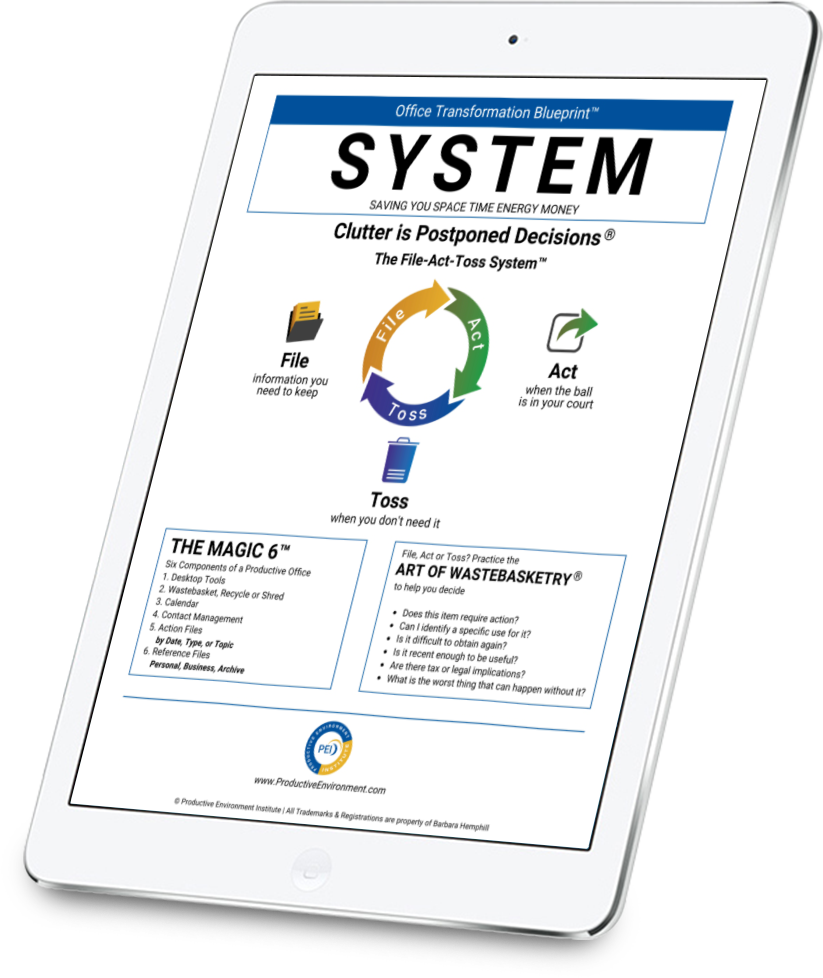Productive Environment Blog

Time-Blocking Without the Burnout | Katrina Willis
Have you tried time-blocking?
Essentially, it’s where your day is divided into blocks of time in which you do some sort of activity, whether that be a work task, a personal commitment, or some type of ‘me time’.
It’s a really popular method of time management and, more often than not, involves a digital calendar and the colour-coding of different task categories. It does give you a visual snapshot of your day (or week) and can clearly indicate whether you are allocating a balance of task categories. If, for example, your work tasks are blue and you see most of your waking hours are allocated as ‘blue blocks’, then you might want to address your work/life balance. All work and no play doesn’t make for a sustainable schedule, does it?
Recently I watched a YouTube video that illustrated the method using rocks and sand (yes, the Big Rocks video by Stephen Covey)
In the video it’s demonstrated that, to fill your bucket fully, it’s better to place your large rocks in the bucket first, followed by the medium blocks. And then, finally, add the remaining sand. So the theory is, with time blocking, you add your large time blocks (tasks) into your calendar, followed by the medium time blocks, and then fill the rest of your day/week with the small time blocks.
The system sounds fabulous, doesn’t it? Whether you choose to do it digitally or in a paper diary, all that colour coding and organisation harmonises as beautifully and purely as the finest of Welsh Male Choirs.
But, if there’s one thing I learned in my years as a Personal Assistant, a schedule with no ‘wiggle room’ can fall apart in a nano-second with one tiny delay. If a meeting runs overtime or the traffic to the airport is insanely heavy, even the fastest of sprinters won’t make it past a boarding gate that has already closed.
So here’s an idea I picked up from ANOTHER YouTube video.
If you’re new to time-blocking, you might also be new to the concept of estimating the time different tasks may actually take. That 2 hour task you’ve allocated to 10am on Mondays, may actually regularly take 3 hours to complete. Or the 1 hour task on Tuesdays at 11am, could be something that actually takes only 30 minutes.
Can you imagine the amount of stress you’ll be facing if your fully-time-blocked day goes sadly off-track before lunchtime? Will you be madly trying to half-do the remaining daily tasks in an effort to make up time? Or will you throw your hands up in the air and abandon the schedule altogether?
One way around this dilemma is to ease yourself into the time-blocking method. Try choosing just 2 of the large tasks and enter their time blocks into your day. Spread them out so there’s no issue of them overlapping (perhaps one in the morning and one in the afternoon).
Undertake each task with as much effort and speed as you need to, to complete the task to your satisfaction. Give yourself grace if you complete it before or after your allocated time-block, and just note down the more realistic timeframe.
When you feel you have a more accurate gauge of the time-block needed for these tasks, then try adding one or two more into your day, and so on.
Eventually you time-blocks will be a reflection of the time it actually takes YOU to complete the. Which means that your schedule becomes achievable, and not a source of stress.
And you don’t need to use a digital calendar if that’s not for you. Just because someone else likes their schedule set out that way, it doesn’t automatically mean that it will work for you. You may be someone who prefers a paper planner or diary, and the physical act of setting out your day and writing down what you would like to do (with or without highlighters).
And that’s perfectly fine. The best system for a person, is the one you will actually use consistently.
Or, as my eldest niece tells me, “you do you”.
Thoughts, anyone?
Meet Our Team of Experts

BARBARA HEMPHILL
FOUNDER
Productive Environment Institute

ANDREA ANDERSON
CEO
Productive Environment Institute

KAREN LYNCH
CPES Masters™ Plus
San Francisco Bay Area, CA

JULIANA KATHMAN
CPES Masters™ Plus
Statesville, NC

KATHY MUZIK
CPES Masters™ Plus
Chicago, IL

ANN THOMPSON
CPES Masters™ Plus
Charlottesville, VA

KERRY THOMAS
CPES Masters™
The Villages, FL + VA

CAREN OSBORNE
CPES Masters™
Chapel Hill + Raleigh, NC

KATRINA WILLIS
CPES Masters™
Wentworth Point, NSW

BARBARA MUCKEL
CPES Masters™
Crown Point, IN

CARLA ZWAAN
CPES Masters™
Shelton, CT

TERRY LOFGREN
CPES Masters™
Austin, TX

LIZ FACKELMAN
CPES Core™
Davidson & Lake Norman, NC

CONTACT US
Use the Contact button on this page or
Leave a Voicemail @


